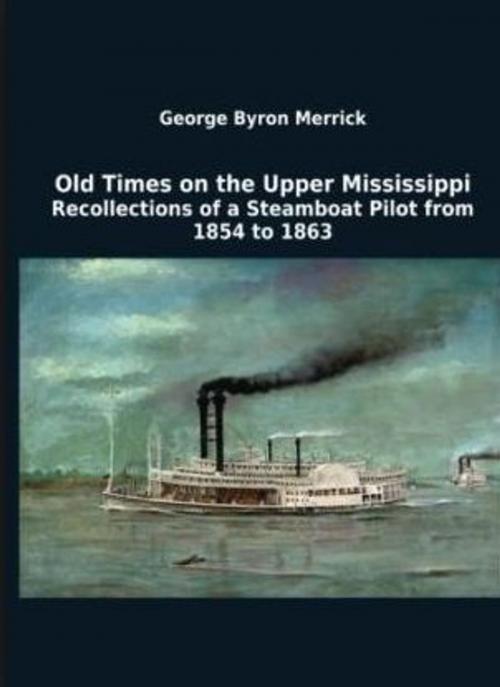| Author: | George Byron Merrick | ISBN: | 1230002320465 |
| Publisher: | Jwarlal | Publication: | May 14, 2018 |
| Imprint: | Language: | English |
| Author: | George Byron Merrick |
| ISBN: | 1230002320465 |
| Publisher: | Jwarlal |
| Publication: | May 14, 2018 |
| Imprint: | |
| Language: | English |
This book is among the best-selling popular classics "bestseller". Here is an extract of this book :
Descent from an ancestry whose members built and sailed ships from Salem, Newburyport, and Nantucket two hundred years ago, and even down to the early days of the nineteenth century, ought to give an hereditary bias toward a sailor's life, on waters either salt or fresh. A score-and-a-half of men of my name have "died with their boots on" at sea, from the port of Nantucket alone. They went for whales, and the whales got them. Perhaps their fate should have discouraged the sea-going instinct, but perversely it had the opposite effect. A hundred men are lost out of Gloucester every year, yet their boys are on the "Banks" before they are fairly weaned.
I was born at Niles, Michigan, on the historic St. Joseph River, which in those days was of considerable importance commercially. Scores of keel boats plied between South Bend and the mouth of the river at St. Joseph, on Lake Michigan. Keel boats drifted down the river, and after unloading were towed back by little steamboats, about eighty feet long by eighteen feet beam. These were propelled by side wheels attached to a single shaft, driven by a horizontal engine of indifferent power. These steamers towed four "keels" upstream at the rate of five or six miles an hour. The former had no upper cabin answering to the "boiler deck" of the Mississippi River boats—only a roof covering the main deck, with the passenger cabin aft, and the quarters of the crew forward of the boiler and engine.
It was, I suppose, a quarter of a mile from my birthplace to the river bank where we boys of the neighborhood went to 16 see the steamboats pass. In the opposite direction, around a sharp bend and across the low-lying, alluvial land, which comprised the home farm, the river was discernible a mile away. When a boat was seen coming up river, the alarm was given, and we little shavers of the neighborhood raced for the nearest point of view, a high bank of blue clay, rising probably seventy-five feet above the river. We used to think it was as many hundreds of feet; and what I now know as the quarter mile, then stretched away into interminable distances as it was measured by the stubby yet sturdy little legs of six-year-old runners. On the edge of this blue-clay bank, I received my first impressions in river piloting.
My teacher in these matters was a man whom I greatly envied. Kimball Lyon lived in a house three times as large as that in which I was born. His father had left a big farm and a bank account of fabulous dimensions. We knew it was large, because "Kim" never worked as other young men of twenty-five or thirty years did in those days. His mother always kept a "hired man", while Kim toiled not; but he spun.
This book is among the best-selling popular classics "bestseller". Here is an extract of this book :
Descent from an ancestry whose members built and sailed ships from Salem, Newburyport, and Nantucket two hundred years ago, and even down to the early days of the nineteenth century, ought to give an hereditary bias toward a sailor's life, on waters either salt or fresh. A score-and-a-half of men of my name have "died with their boots on" at sea, from the port of Nantucket alone. They went for whales, and the whales got them. Perhaps their fate should have discouraged the sea-going instinct, but perversely it had the opposite effect. A hundred men are lost out of Gloucester every year, yet their boys are on the "Banks" before they are fairly weaned.
I was born at Niles, Michigan, on the historic St. Joseph River, which in those days was of considerable importance commercially. Scores of keel boats plied between South Bend and the mouth of the river at St. Joseph, on Lake Michigan. Keel boats drifted down the river, and after unloading were towed back by little steamboats, about eighty feet long by eighteen feet beam. These were propelled by side wheels attached to a single shaft, driven by a horizontal engine of indifferent power. These steamers towed four "keels" upstream at the rate of five or six miles an hour. The former had no upper cabin answering to the "boiler deck" of the Mississippi River boats—only a roof covering the main deck, with the passenger cabin aft, and the quarters of the crew forward of the boiler and engine.
It was, I suppose, a quarter of a mile from my birthplace to the river bank where we boys of the neighborhood went to 16 see the steamboats pass. In the opposite direction, around a sharp bend and across the low-lying, alluvial land, which comprised the home farm, the river was discernible a mile away. When a boat was seen coming up river, the alarm was given, and we little shavers of the neighborhood raced for the nearest point of view, a high bank of blue clay, rising probably seventy-five feet above the river. We used to think it was as many hundreds of feet; and what I now know as the quarter mile, then stretched away into interminable distances as it was measured by the stubby yet sturdy little legs of six-year-old runners. On the edge of this blue-clay bank, I received my first impressions in river piloting.
My teacher in these matters was a man whom I greatly envied. Kimball Lyon lived in a house three times as large as that in which I was born. His father had left a big farm and a bank account of fabulous dimensions. We knew it was large, because "Kim" never worked as other young men of twenty-five or thirty years did in those days. His mother always kept a "hired man", while Kim toiled not; but he spun.















